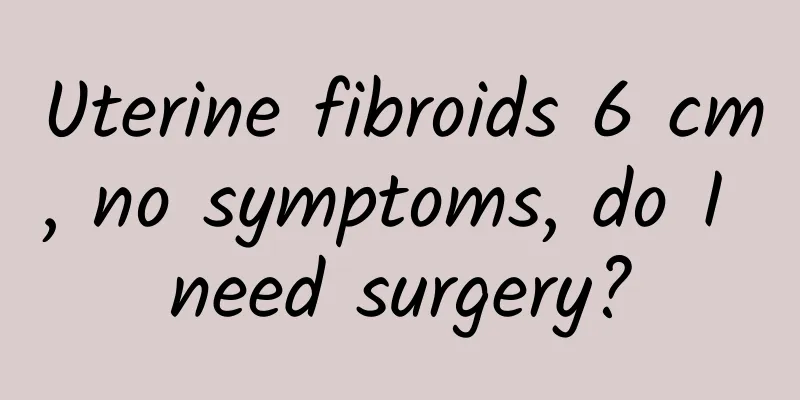Uterine fibroids 6 cm, no symptoms, do I need surgery?

|
If the uterine fibroid is 6 cm and there are no symptoms, you can usually choose to observe it temporarily instead of rushing to surgery. In this case, doctors usually recommend regular monitoring of changes in the fibroid. 1. The importance of observation and monitoring: For patients with uterine fibroids who have no symptoms, regular B-ultrasound examinations are very important. By monitoring the size and growth rate of the fibroids, doctors can determine whether the treatment plan needs to be adjusted. If the fibroids grow rapidly in a short period of time, or symptoms such as irregular menstruation begin to appear, surgery may become a necessary option. 2. Consideration of quality of life: If uterine fibroids do not affect daily life and women have no fertility needs, they can choose to continue observation. Quality of life is an important consideration. Asymptomatic fibroids usually do not affect quality of life, but if they begin to affect daily activities or psychological state, surgery may be an option to improve quality of life. 3. Impact on fertility plans: For women who have fertility plans, uterine fibroids may affect pregnancy. Although fibroids are benign lesions, they may change the environment in the uterus and affect the implantation of fertilized eggs. If you plan to get pregnant, especially if you encounter difficulties in trying to get pregnant, surgery may be a necessary step to ensure the best conditions for pregnancy. 4. Symptoms and treatment: Some women may experience dysmenorrhea, increased menstrual flow and other symptoms as the fibroids gradually grow. These symptoms not only affect the quality of life, but may also indicate other potential effects of fibroids on the body. In this case, surgery can effectively relieve symptoms and prevent further health problems. 5. Individualized treatment plan: Each patient's situation is different, and the treatment plan should be individualized. The doctor will comprehensively evaluate whether surgery is needed based on factors such as the size and location of the fibroids, the patient's age, symptoms, and fertility needs. Maintaining good communication with the doctor and understanding your condition and treatment options are the key to developing a health management plan that best suits you. The treatment of uterine fibroids requires a combination of many factors. Regular monitoring, paying attention to changes in symptoms, and communicating with doctors are effective ways to ensure health. For any health problem, it is always the wisest choice to consult a professional doctor in time. |
<<: I am full term and my stomach hurts like menstruation.
>>: How to induce menstruation when the endometrium is 7mm
Recommend
What can I eat to relieve the symptoms of dysmenorrhea?
A reasonable diet is helpful to relieve dysmenorr...
Causes of bacterial vaginosis in different sizes
Due to the structural characteristics of the fema...
What are the nursing precautions for pelvic inflammatory disease
The goal of pelvic inflammatory disease treatment...
The harm that hyperprolactinemia can cause to the body
What harm does hyperprolactinemia bring to the bo...
Currently, many women are concerned about the cost of minimally invasive painless abortion
Before using painless abortion, we must first hav...
5 reasons for irregular menstruation in women There are four dietary methods to regulate irregular menstruation
Irregular menstruation is one of the common menst...
The dangers of newly acquired hyperprolactinemia
Hyperprolactinemia, also known as hyperprolactine...
I walk 10,000 steps a day, but my belly still doesn’t go away? Squat + high-intensity aerobic exercise to get rid of lower body fat
We often hear the saying: "Walk 10,000 steps...
What are the common complications of menopausal women?
The menopause in women is very harmful and will b...
Will uterine myoma lead to masculinization after hysterectomy?
For patients with uterine fibroids whose symptoms...
Obesity is a risk factor for diabetes, and diabetics may increase their risk of cardiovascular disease or kidney disease!
Diabetes is a national disease! According to stat...
Do you know what pelvic inflammatory disease is?
The emergence of gynecological diseases has disru...
The more you lose weight, the fatter you get! Don’t commit the NG behavior during the weight loss plateau
Obesity is the root of all diseases. During the w...
Check out the key points of preventing female adnexitis
For adnexitis, we must actively do a good job of ...
What are the causes of vulvar leukoplakia
If you are unfortunately suffering from external ...









